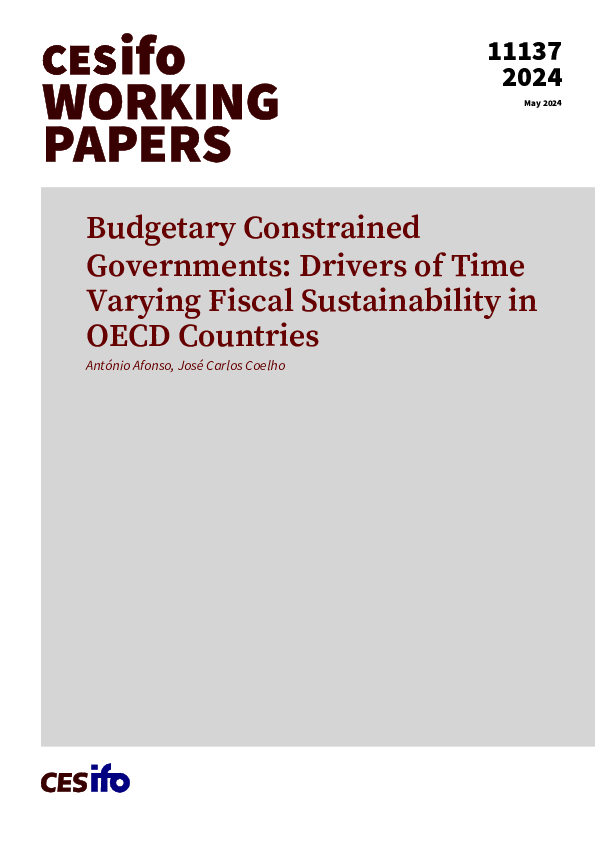Budgetary Constrained Governments: Drivers of Time Varying Fiscal Sustainability in OECD Countries
CESifo, Munich, 2024
CESifo Working Paper No. 11137

We assess the drivers of fiscal sustainability in 20 OECD economies between 1950 and 2019. We find stable long-term relationships between government revenues and expenditures as well as between the primary budget balance and past public debt ratio for the full panel. Performing an expanding window analysis, we conclude that the differential between the long-term real interest rate and the real GDP growth rate (r-g) plays a crucial role in fiscal sustainability, as well as the existence of fiscal rules in terms of the budget balance, and also the output gap. The effects of inflation, external accounts balance and fiscal rules on sustainability coefficients à la Hakkio and Rush (1991) and Bohn (1998) are heterogenous. Furthermore, before the global financial crisis of 2008, the effects of the (r-g) differential were particularly strong, and depended on its sign as well as on past debt-to-GDP ratios.
Public Finance
Fiscal Policy, Macroeconomics and Growth